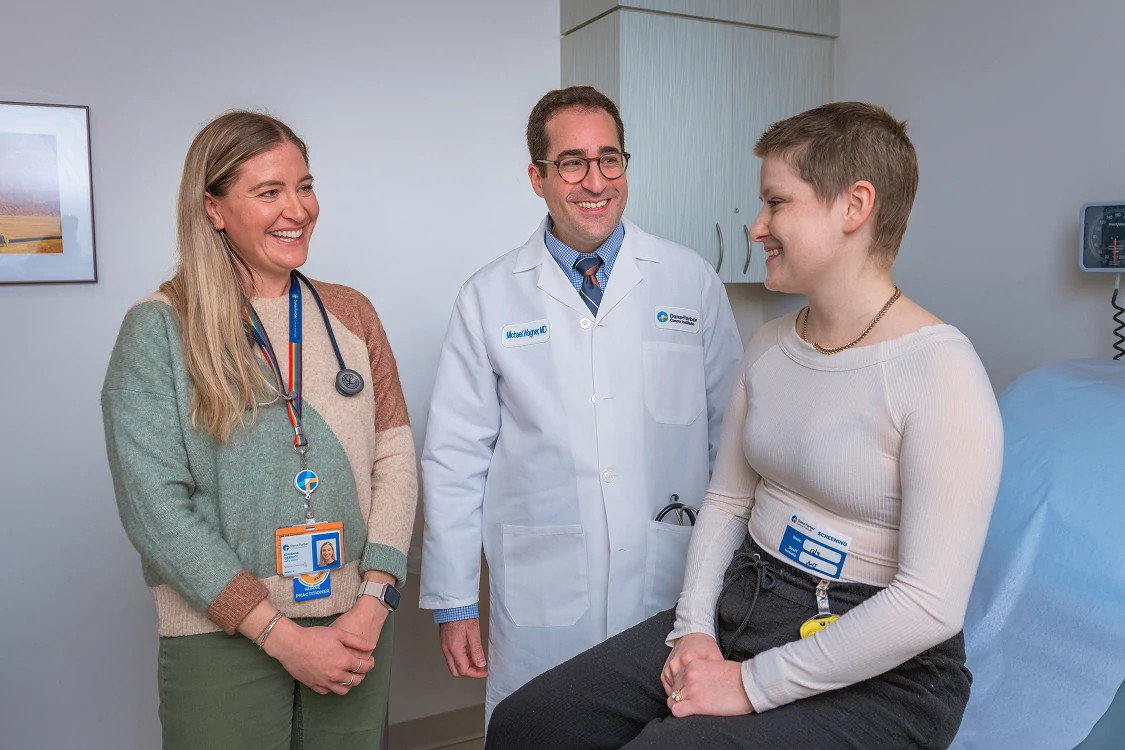Understanding eTCR Therapy: How Does It Work?
The typical steps in eTCR therapy are:
Cell Collection
In the first step of eTCR therapy, T cells are collected from patients via leukapheresis, a process that withdraws blood from the body, and moves through a cell separator to collect the needed blood components, in this case T cells. The remaining blood components are then returned into the body.
eTCR Manufacturing
The T cells are sent to a laboratory where they are genetically engineered to target a specific type of cancer.
Bridging Therapy
While the eTCRs are being made, patients receive bridging therapy to treat and manage their disease.
Preparative Chemotherapy
Patients receive a short course of chemotherapy to make room in their immune system for the eTCRs to expand and multiply.
eTCR Infusion
Patients are admitted to the hospital for their eTCR infusion. eTCRs are infused through a central line.
Follow-Up Care
Patients have a follow-up appointment at Dana-Farber one month after their eTCR infusion. Then, they will have appointments with scans every three months for a period of time to monitor their health and response to eTCR therapy.
Success Rate and Side Effects: What Can I Expect After eTCR Therapy?
eTCR therapy has shown benefits in some patients with metastatic synovial sarcoma. Although most patients do not experience the common side effects associated with chemotherapy such as hair loss, nausea, and vomiting, there are risks of significant side effects with eTCR therapy.
Possible side effects from eTCR therapy include:
- Cytokine release syndrome: eTCR cells can initiate a massive release of substances called cytokines, which triggers an inflammatory condition known as Cytokine-Release Syndrome (CRS). Symptoms may be flu-like, with a high fever and/or chills; low blood pressure; difficulty breathing; or confusion. These symptoms can be mild or severe.
- Neurologic difficulties: Patients may also experience confusion, difficulty understanding language and speaking, or stupor.
Patients are monitored closely to manage reactions to this therapy. The complications are generally temporary and resolve with treatment. Our care team is specially trained to identify and manage these side effects.
Care and Support for Patients
At our Center, patients receive outstanding care from experts in their disease type and cellular therapies. The care team includes a disease-specific oncologist, surgeon, nurse practitioner or physician assistant, and oncology nurse navigators. Patients also receive support from financial counselors, social workers, clinical coordinators, and resource specialists.
Explore support services and resources we offer to help patients on their treatment journey.
